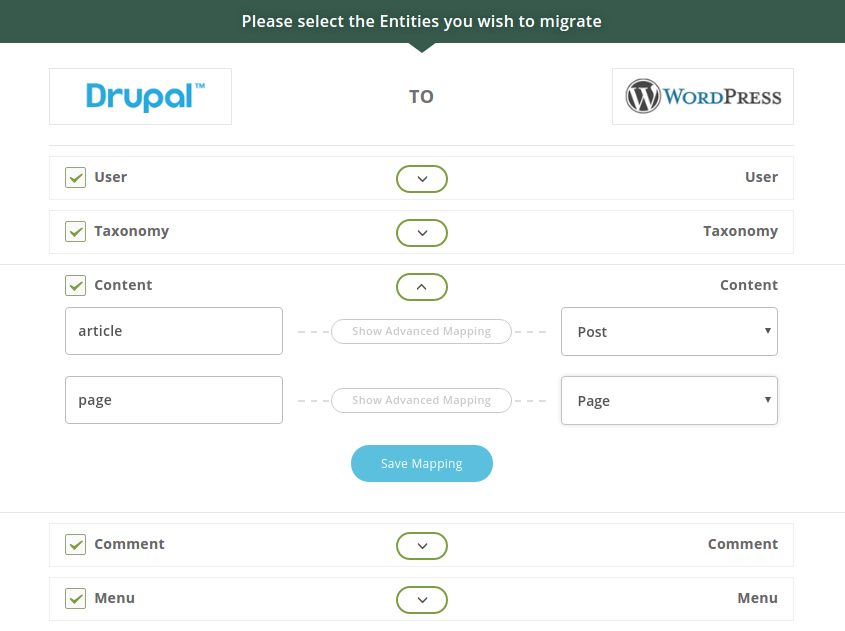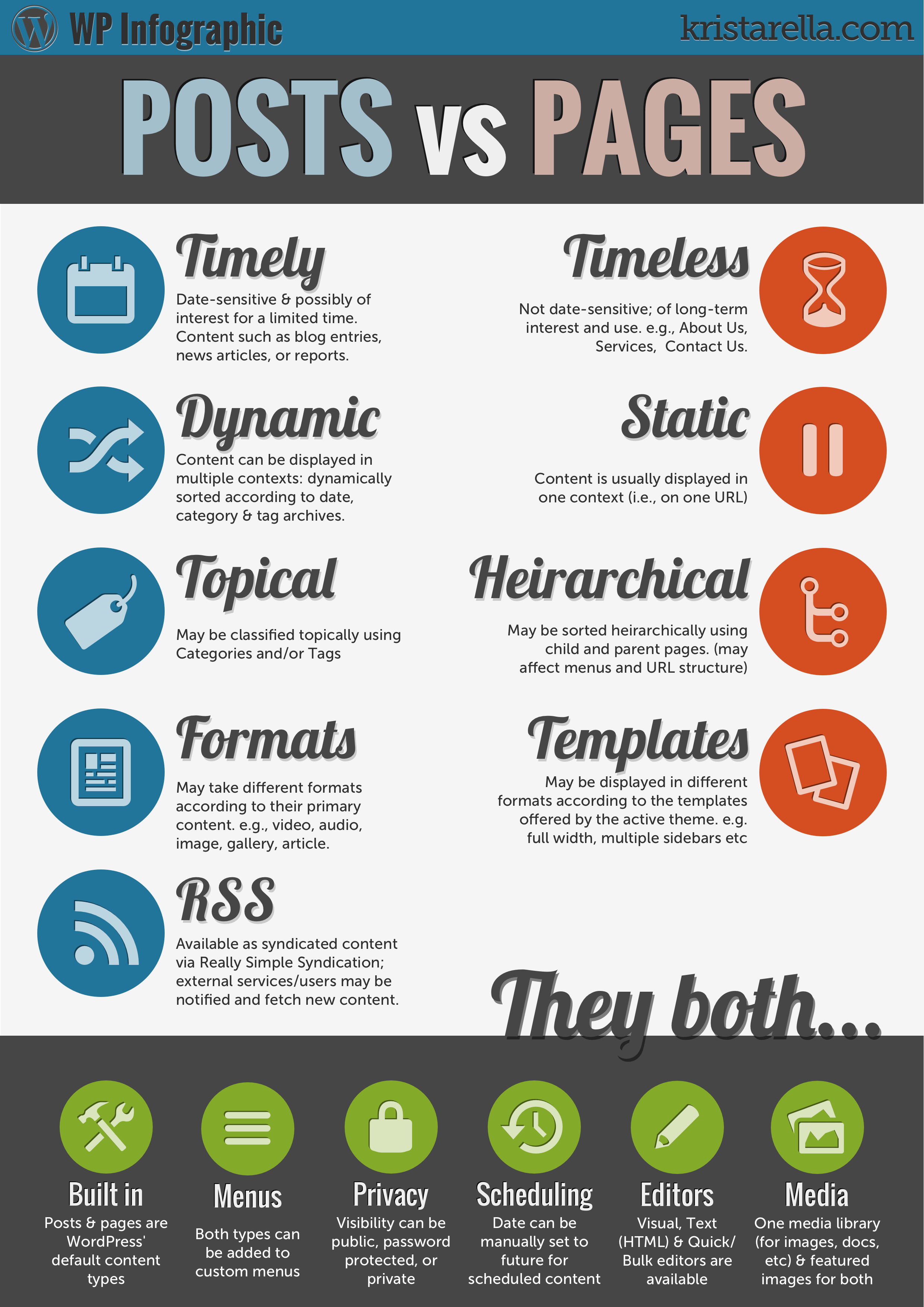When it comes to creating content for the WordPress site, the new users often get confused while choosing between posts and pages. These are the default content types of WP CMS. Being a newbie to WordPress, you may wonder what is the difference between them? Should you create a new post or new page?
In this article, you will find out how WP pages and posts differ from each other and which one you should use in the particular moment.
Defining Pages
Pages are the static content you would find on the website. Such pages as ‘About me,’ ‘Contact’, ‘Privacy policy’, etc. can serve as a good example.

- The content published on pages is written once and barely ever changed.
- Another peculiarity of the WordPress pages is that they are timeless even though WP keeps their time and date of publishing.
- Due to their timeless nature, pages aren’t included in RSS feeds by default. Unlike posts, pages are not meant to be social in most cases. Consequently, the pages do not add social sharing buttons or comments.
- Pages are hierarchical by nature. For example, you can have subpages within a page. It is possible to nest pages and thus to create logical groups. This aspect provides you with an opportunity to organize your pages together, and even assign a custom template to them.
- As it was already mentioned, the pages can have custom templates. If the theme comes with one, you can choose a template and customize the look of each page when necessary.
- Pages also have this old feature called Order which lets you customize the order of pages by assigning a number value to it. One example where this feature is nice to have are websites that use sections. Usually, each page would represent one part of the site, and you could move them up and down by rearranging pages.
Speaking of Posts
WordPress posts should be used for dynamic content. In other words, each time you want to write a new story, article, share some images or video, etc., you should create a new post.

- Posts are content entries listed in reverse chronological order on your blog’s homepage. This means that the latest post you have published will always be on top. As the post gets older, the deeper the user has to dig to find it.
- WordPress CMS provides you with the possibility to organize your posts based on categories and tags. By doing so, you can group posts and make them easier to find to an average user.
- Because WordPress posts are published with time and date in mind, they are syndicated through the RSS (Rich Site Summary; also known as RDF Site Summary and often called Really Simple Syndication) feeds. If users subscribe to your RSS feed, they can get new posts from your blog directly to browsers or smartphones without actually having to open your site.
- The very timely nature of posts makes them extremely social. You can use one of the many social sharing plugins to allow your users to share your posts on social media networks like Facebook, Twitter, LinkedIn, Google+, etc.
- One more noteworthy feature is that posts come with a built-in commenting system. It’s very likely that people have something to say about your published posts and want to comment on a particular topic.
Similar but Different: WordPress Pages vs Posts
While migrating your website with aisite service, it is possible to map your content. For instance, you can choose whether you want your pages to be migrated to pages on your new website or to posts. Even though WordPress pages and posts may sound like very similar things, after having a look at this article, it is clear that there are some significant differences between these two notions and you will make the right choice while migrating your content:
- Use posts for dynamic content which you can group with the help of categories and tags.
- Use pages for static content which describes your website in general.












